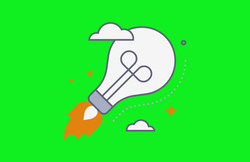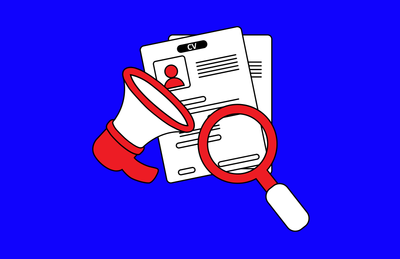On this page
This information was originally presented at the Competitive Intelligence Alliance’s Win/Loss Summit in October 2024.
Product marketers have endless task lists: understanding the ideal customer, determining product differentiation, defining messaging, creating sales materials, effectively launching new products and updating web copy. The last thing they want to do is add another project to that list. However, without customer intel, these other efforts might fail. So, setting up a win-loss program early on is essential.
This blog looks at why initiating a win-loss program is vital for product marketers. It provides tips on setting up a program from scratch and using the results to build successful relationships with sales and customer success teams.
What is a win-loss program?
At the end of a sales cycle, prospects will either decide to purchase your product, go with a competitor, or, in many instances, do nothing. Your goal as a product marketer is to understand which factors influence the decision to purchase your product. This intel helps you define messaging and improve sales processes.
A win-loss program is a formal product marketing initiative that involves regularly interviewing customers at the end of the sales cycle when the deal is won or lost. It should incorporate a set process describing when the interviews will take place, how many are required, and who will run them. Finally, a win-loss program requires a strategy for using this customer intel alongside other findings from sales calls or product interviews. It should incorporate ways to share information cross-functionally and how to use this knowledge to evolve marketing messaging.
Five reasons why product marketers need a win-loss program
When you launch a product marketing function, you probably feel overwhelmed. There are a million things to do, including figuring out company differentiation, determining messaging, building sales collateral, and staying on top of communicating product announcements. And if the people who hired you know anything about product marketing, they’ll probably want you to fix issues with the sales process and help win more deals.
Perhaps you think you can’t possibly add another thing to your to-do list. However, you absolutely need a win-loss program and here are the five reasons why.
Founders don’t know everything, and neither do you
At early-stage companies, product marketers work closely with the company's founders to help bring their vision to life. However, sometimes founders have set views on things and don’t always have time to focus on specific details of the sales cycle or gather regular customer feedback. It's your role as the product marketer to get to know the details and improve them. Additionally, even if you bring years of industry knowledge from past experiences, you want to verify that it applies to this specific company and scenario.
Win-loss interviews give you fresh customer intel about the market. They help you understand the company’s unique customers, sales cycle and what’s working. The conversations also give you data points to support an alternative viewpoint. That way, when you disagree with the founders about messaging or the ideal customer's pain points, you'll have evidence to support your case.
Keep your knowledge current
Even if the founders have spent a lot of time chatting with customers, things constantly change. Competitor messaging, market dynamics, environmental factors and workplace trends all impact how your customers think about buying new solutions. The reasons your customers bought from you yesterday might not be valid tomorrow. You need to make sure your knowledge is relevant and up to date, particularly when it comes to competitors or where people found out about your product.
Start building relationships with sales and customer success
The relationship between product marketing, sales and customer success teams is extremely important. You want to focus on building those relationships early when you're new to the company.
Win-loss interviews are a great way to do this because they involve all three teams and give you intel to share. Making yourself known to these teams will be beneficial later when updating assets for the sales team, asking for case studies, setting up product interviews, or even getting feedback from beta testing trials.
Uncover competitive insights
Competitive intel is one of the most valuable things you'll learn from win-loss interviews. This is an opportunity to gather information on your competitors. Typically, you’ll uncover some unique insights you wouldn't be able to find by researching G2 reviews, Reddit or your competitors’ websites.
Create relevant messaging
The most important reason for setting up a win-loss program is to help with all the other things on your task list. Without customer intel, your messaging might fall flat, your sales deck won’t resonate, and your website copy may not drive the conversions you want.
The information from win-loss interviews translates directly into marketing materials and web copy so you can stay relevant to your unique audience and adapt over time.
How to build a win-loss program from scratch:
Convinced that you need a win-loss program? Here are the steps to kick it off when you don't have many resources or a budget to hire an external agency.
Create a process
The first thing to do is set up a process document. At startups, we often assume documentation isn't necessary because things change so fast. However, the opposite is true. Processes help provide structure to make things repeatable.
With a simple document that’ll take no more than an hour to create, you’ll be able to access the information every time you need it and look professional to the rest of the team. If you’ve set up a similar program before, you can tailor your old template to each new company.
Your win-loss interview process should describe precisely what should happen when including:
- When the interview will take place. I recommend you run this within the first two weeks of a deal being won or lost. That way, information about the sales cycle and decision is fresh in the prospects' minds. It hasn’t been influenced by the implementation or product usage yet.
- Which team member will communicate with the customer to organize the interview. It’s likely to be the account director who closed the deal. It’s best to write up an email template that can be reused each time.
- Who will run the interview itself? Product marketing is the logical choice when you're in a small team because they’re removed from the sales negotiation and can gather unbiased feedback. A customer intel team or even a specialist outside agency might run the interviews in a larger organization.
- Which questions to ask. Highlight the things you absolutely must get the answers to and add some flexible questions you could ask depending on the responses and how much time you have left.

Get the sales team onboard
Make it really easy for sales to facilitate these conversations. So, clarify the process and their role in helping you set up interviews. Explain why you're running the program and how it will benefit them through sales collateral refinement and competitive insights. You can even set an automation in Slack to remind sales to schedule an interview a couple of days after a deal has closed.
Select which questions to ask
There are many resources out there already on which questions to ask in the win-loss interview, so I won't go into too many details.
Recognize what you want to get out of the conversation to make it worthwhile. For me, it’s about understanding why the prospect purchased your solution or a competitor's. You might want to know about the deal itself, what pain points they had that led to the purchase, their role in the decision, and who else was involved. Your focus might change over time as you look to improve different aspects of marketing or sales conversations.
I like to add bonus questions to the interview to help me develop a broader marketing strategy. For example, how did they learn about your company, which publications they read, and what events they attend?
Try to understand someone’s goals and what will make them happy with their decision to purchase a few months from now. If possible, get information on how they’re measuring the project's success.

Conduct an effective interview
Before running the interview, do your homework on the customer. Look in HubSpot or Salesforce to find out the size of the deal, the sales cycle length, whether they engaged with any marketing content, where they’re at with the deployment, and which custom settings or integrations they’re interested in.
Keep the customer success lead in the loop about your interview so you appear cohesive when they have a follow-up conversation with the customer.
Thirty minutes is the maximum time you want to spend on the interview. Respect their time and reassure them that the information will be kept confidential.
I recommend not sticking to the script to make sure it's a worthwhile conversation. Firing questions at someone can feel too much like an interview, so make it conversational and adapt your questions to their responses as you go. Pausing and asking follow-up questions helps to get more interesting information.
What to do with the information
You've run a few win-loss interviews and started to see some trends. Now you want to know what to do with all this valuable information. AI can help uncover themes from the call recordings, but you also want to ensure others on your team can access the knowledge.

Personas, messaging, and web copy
Use the interviews to build out your persona framework. Understand which roles are typically involved in the deal, what they care about and what pain points they have.
Tailor messaging using the reasons people buy. Suppose customers tell you they purchased your solution because of the user interface or a specific integration; those should be your key selling points. Then, use this evolved messaging to update web copy and outbound emails so everything is consistent.
Competitive intel
You'll be surprised by what people tell you in a win-loss interview. When I ran the program, people shared information about the references competitors provided, how long and how much it cost to implement other products, and feedback on features themselves.
To keep track of these learnings, you can set up a customer intel document listing the interviews and critical reasons why people buy your solutions. Add a tab for snippets of competitor intel, which can come from sales conversations as well as these interviews. Viewing all the different conversations side by side can also help uncover trends or quickly find helpful talking points for objection handling. A competitive intel Slack channel is a great place to share insights on competitors.
Sales enablement
Organize regular meetings to review the interview findings in detail. Share what you learned about why they buy and whether there were some competitive findings. If you hear positive feedback about the sales cycle, it’s nice to recognize the people involved. However, you may want to share improvements directly or tackle them later. Don't forget actionable next steps, such as objection handling answers or sales emails based on the conversations that can be used immediately.
Marketing strategy and case studies
Tell the rest of the marketing team if you get news about upcoming conferences or which publications the customer reads. This will help them determine which publications to sponsor and which events to attend.
You can also look at a win interview as the initial step for a case study. You’ll gather all the information on why the customer buys and their pain points. Then, a couple of months later, when the customer sees results from the platform, you'll be ready to chat again to write a case study. Because you've built rapport in the initial interview, they'll be more willing to speak with you.
The problem with win-loss interviews
Despite the many advantages for product marketers, win-loss interviews don’t solve everything. They help you uncover competitive intel and learn why people bought your solution. But they also have limitations:
- They're hard to scale. They rely on a steady stream of willing new customers to speak with you. Sometimes, customers will say no, and sometimes, your time will be limited.
- They're not always a predictor of success. I ran a very insightful interview with a customer, and then, a couple of months afterward, the customer churned. So, take the insights with a grain of salt.
- They only represent a snapshot in time. When someone chats with you, they may not share everything, and their views may change depending on their mood.
This is why getting a cross-section of interviews and running the program over an extended period is so important.
Success with win-loss interviews: part of a holistic customer intel strategy
Ideally, you’d use win-loss interviews as part of a holistic customer intel program. To understand the complete picture of the sales journey and customer touchpoints, you’ll need to review recordings from sales conversations, listen to feedback from sales on what’s working, and run product or churn interviews. Your goal should be to tie the different customer touchpoints together to understand what makes a best-fit customer for your organization and their motivations. This level of information will help you refine the ICP, create targeted sales lists, and refresh messaging and collateral to encourage sales and feature adoption.
Of course, that’s a huge undertaking that requires much more time and effort than you’ll have as a sole or founding product marketer. Win-loss interviews are a great start to understanding your business and how to improve it.








